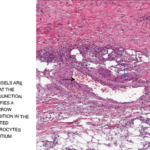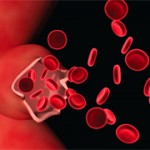
nukeaf / shutterstock.com
In 1866, Adolf Kussmaul, an internist, and Rudolf Maier, a pathologist, published the classic characterization of what eventually became known as polyarteritis nodosa.1 It was the first scientific clinical characterization of a noninfectious vasculitis. As such, it became a paradigmatic point of contrast to other types of vasculitides that were later described. Their description also provided key information about vasculitides that are still used to evaluate patients. Incorporating both precise clinical acumen and the latest in scientific technologies, the case continues to be a source of inspiration and guidance to today’s rheumatologists.
The New Scientific Era of Medicine
To understand the importance of the Kussmaul and Meier case, it is important to place it in the scientific context of the era. Eric Matteson, MD, MPH, is a professor of medicine in the divisions of rheumatology and epidemiology at the Mayo Clinic, in Rochester, Minn. One of Dr. Matteson’s interests is the history of medicine, particularly as it relates to rheumatology. “I think this medical history teaches us how we came to know what we know, and I think that’s important,” he explains. “It also shows us how difficult it is. That helps us know how medicine has advanced and was made more scientific and, ultimately, led to better understanding of the disease and its treatment.”
This was an era in which scientific medicine was first being developed. Various procedures had been performed for hundreds of years, such as removing cataracts, setting wounds, performing amputations and lancing boils. But various superstitions, dubious potions and erroneous metaphysics existed alongside these practices. The scientific basis of disease did not start to become systematically explored until the 1800s or late 1700s.
“Our understanding began to improve with systematic teaching of anatomy initially, and then systematic teaching of pharmacology,” recounts Dr. Matteson. “Then came the advent of technologies like the microscope, the stethoscope and also some chemical analyses of different substrates, like urine.” Clinicians began bringing these tools into their clinical practice.
Diseases of the blood vessels have been known since antiquity, but inflammatory arterial disease had not been characterized. At the end of the 18th century, John Hunter made some of the first observations about diseases of inflammation associated with blood vessels in his observations on phlebitis.
Karl Rokitansky likely provided a description of a case of polyarteritis nodosa in 1852. Although he provided a compelling pathological description of aneurysmal findings seen in autopsy, it was only years later that one of his students examined the specimens under the microscope and found the characteristic changes of inflammation. Rokitansky mistakenly thought the changes were degenerative or hereditary in nature.



